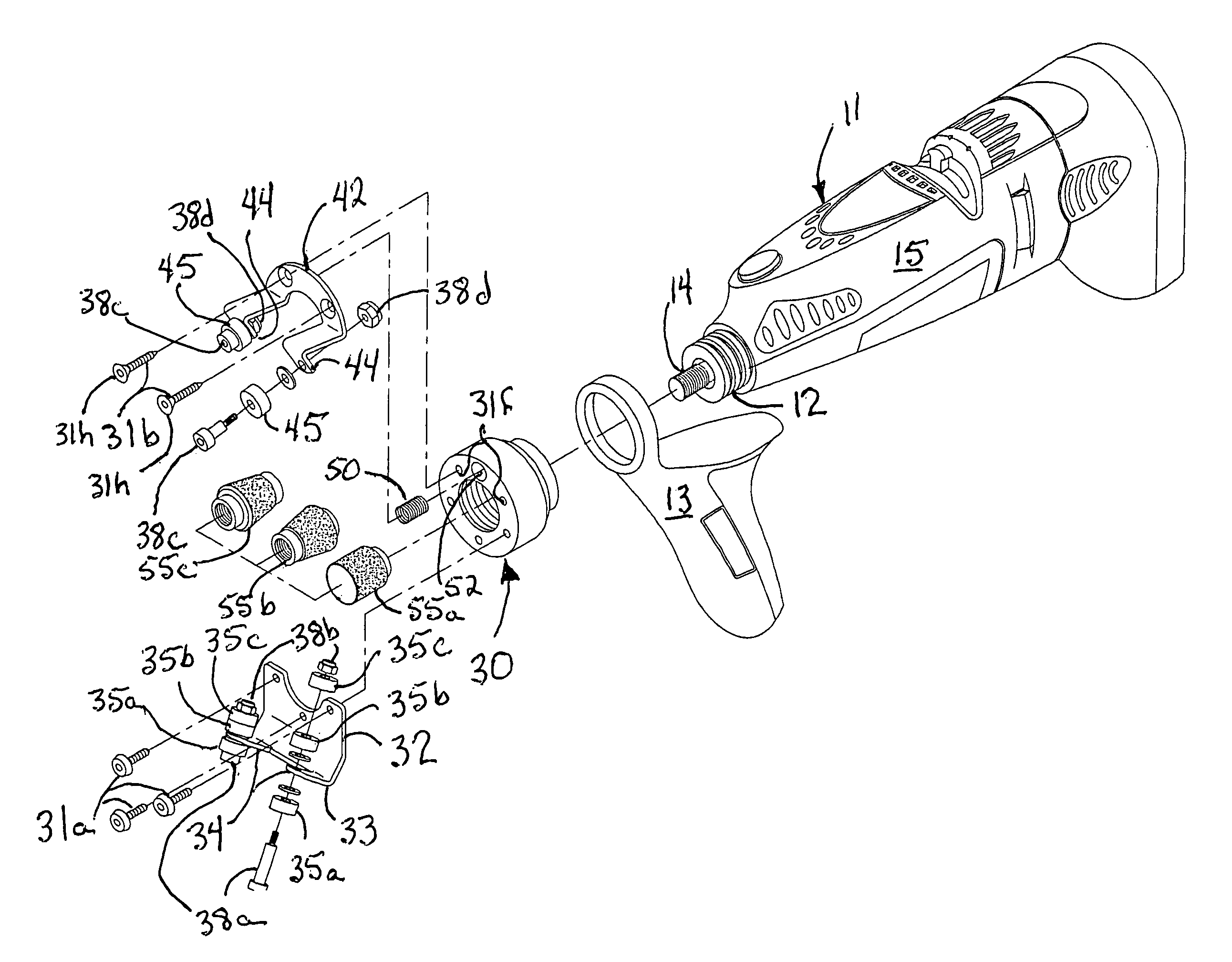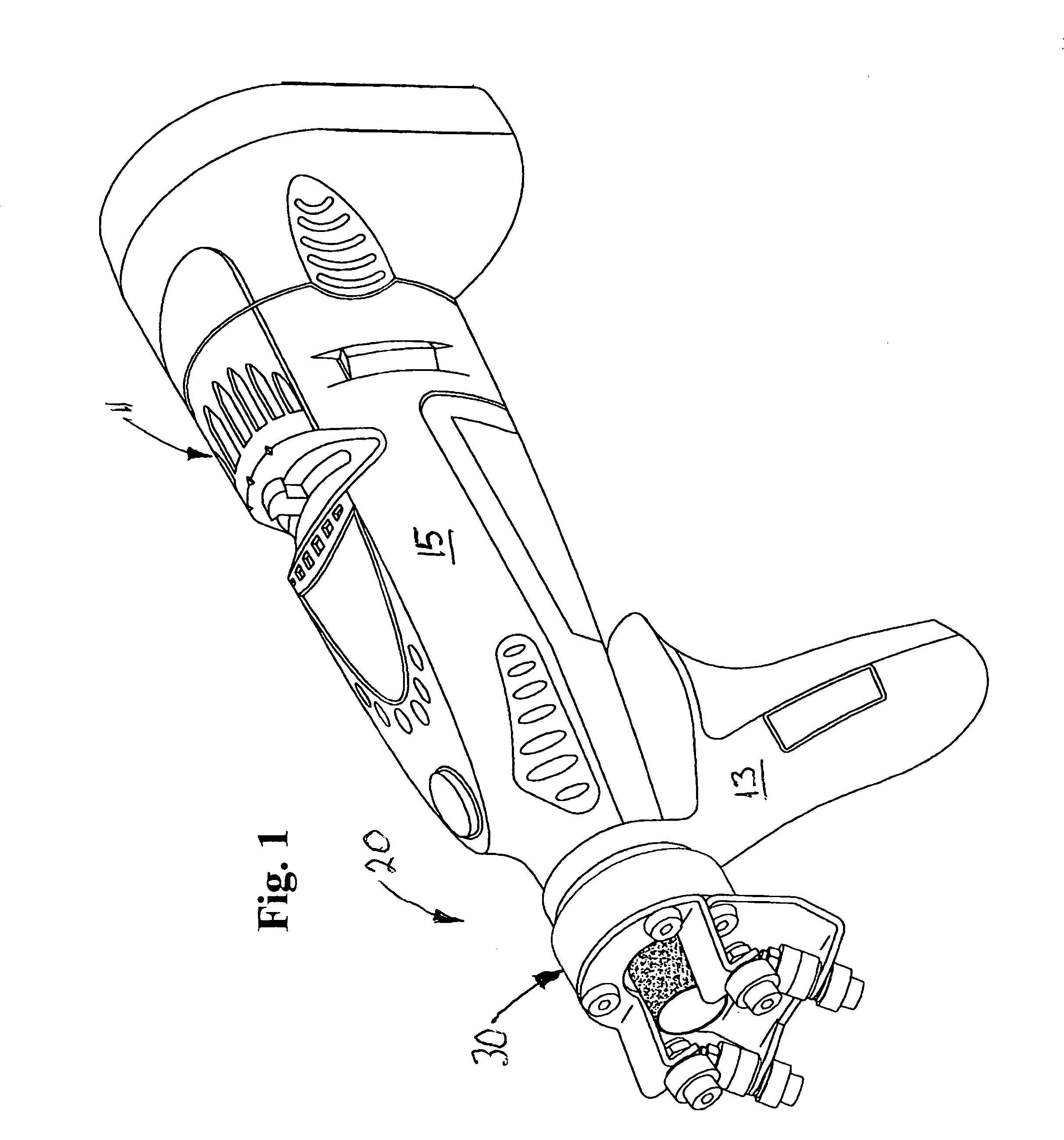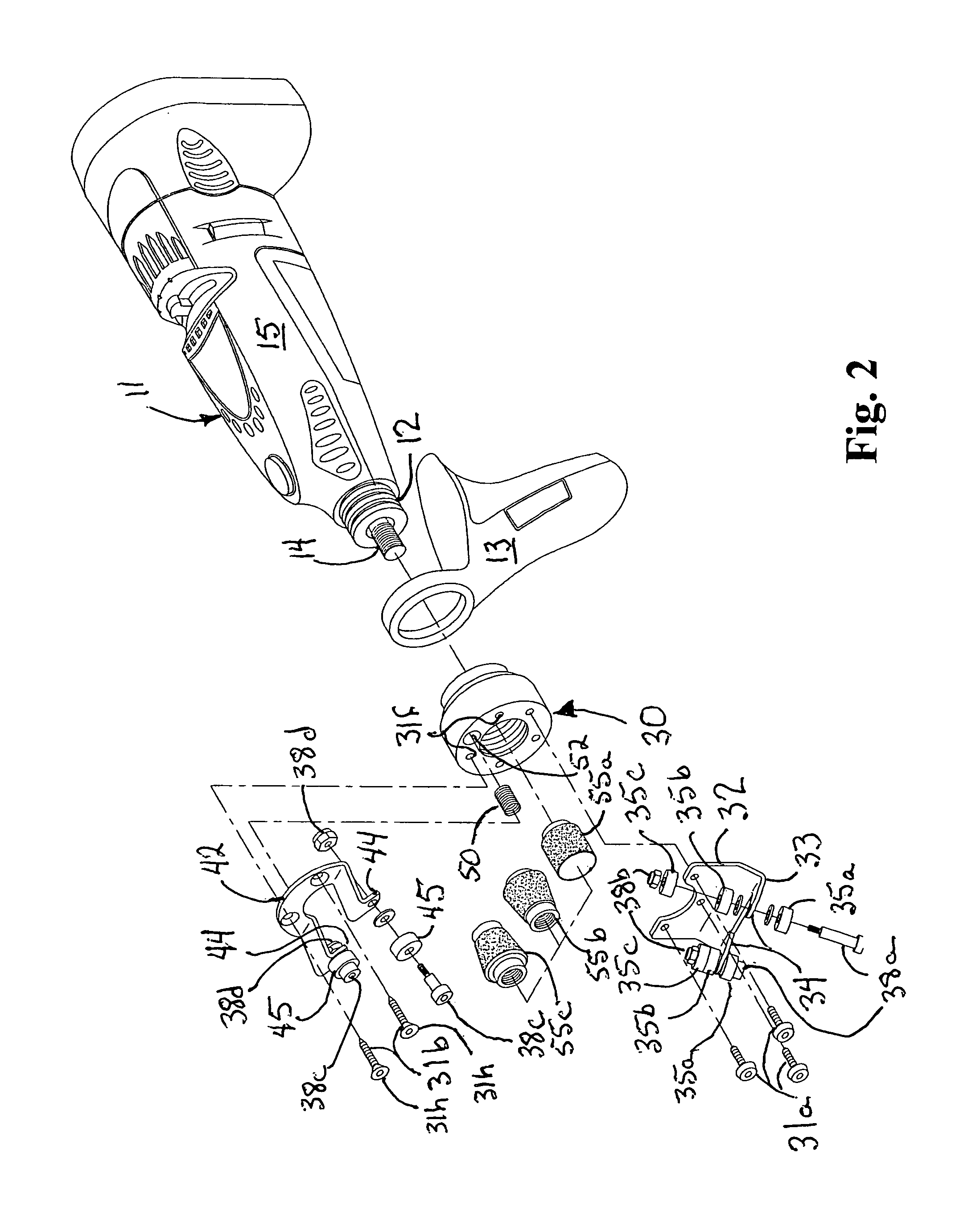Hand-held blade sharpener
a technology of hand-held blades and sharpeners, which is applied in the field of harvesting, can solve the problems of time-consuming and high cost of assembly, and the cost of tabletop style sharpeners themselves is quite high, so as to reduce the risk of injury, reduce the handling, and save significant time
- Summary
- Abstract
- Description
- Claims
- Application Information
AI Technical Summary
Benefits of technology
Problems solved by technology
Method used
Image
Examples
Embodiment Construction
)
[0014]A first embodiment of the hand-held sharpener of the present invention is depicted in FIGS. 1-2 generally at 20. By way of example and not limitation, the rotary power tool 11 depicted in the drawing with which the features of the hand-held blade sharpener 20 of the present invention are implemented is a battery-powered Dremel 7700. Handle 13 is separate from the body 15 (FIG. 2) and, when nose piece 30 is threaded onto the front 12 of tool 11 through handle 13 capturing it there between, handle 13 can be rotated to any position through 360° relative to body 15 by loosening the attachment and rotating the handle or body, to facilitate sharpening of a blade 17 (FIG. 3).
[0015]Nose piece 30 has a first semi-circular face plate 32 mounted to a lower portion using screws 31a. First face plate 32 has a pair of arms 34 crooked at elbows 33, arms 34 mounting a first set of guide rollers, each of the arms 34 mounting a plurality (three shown) of guide rollers 35a, 35b, 35c which engag...
PUM
| Property | Measurement | Unit |
|---|---|---|
| angle | aaaaa | aaaaa |
| abrasive | aaaaa | aaaaa |
| feed angle | aaaaa | aaaaa |
Abstract
Description
Claims
Application Information
 Login to View More
Login to View More - R&D
- Intellectual Property
- Life Sciences
- Materials
- Tech Scout
- Unparalleled Data Quality
- Higher Quality Content
- 60% Fewer Hallucinations
Browse by: Latest US Patents, China's latest patents, Technical Efficacy Thesaurus, Application Domain, Technology Topic, Popular Technical Reports.
© 2025 PatSnap. All rights reserved.Legal|Privacy policy|Modern Slavery Act Transparency Statement|Sitemap|About US| Contact US: help@patsnap.com



